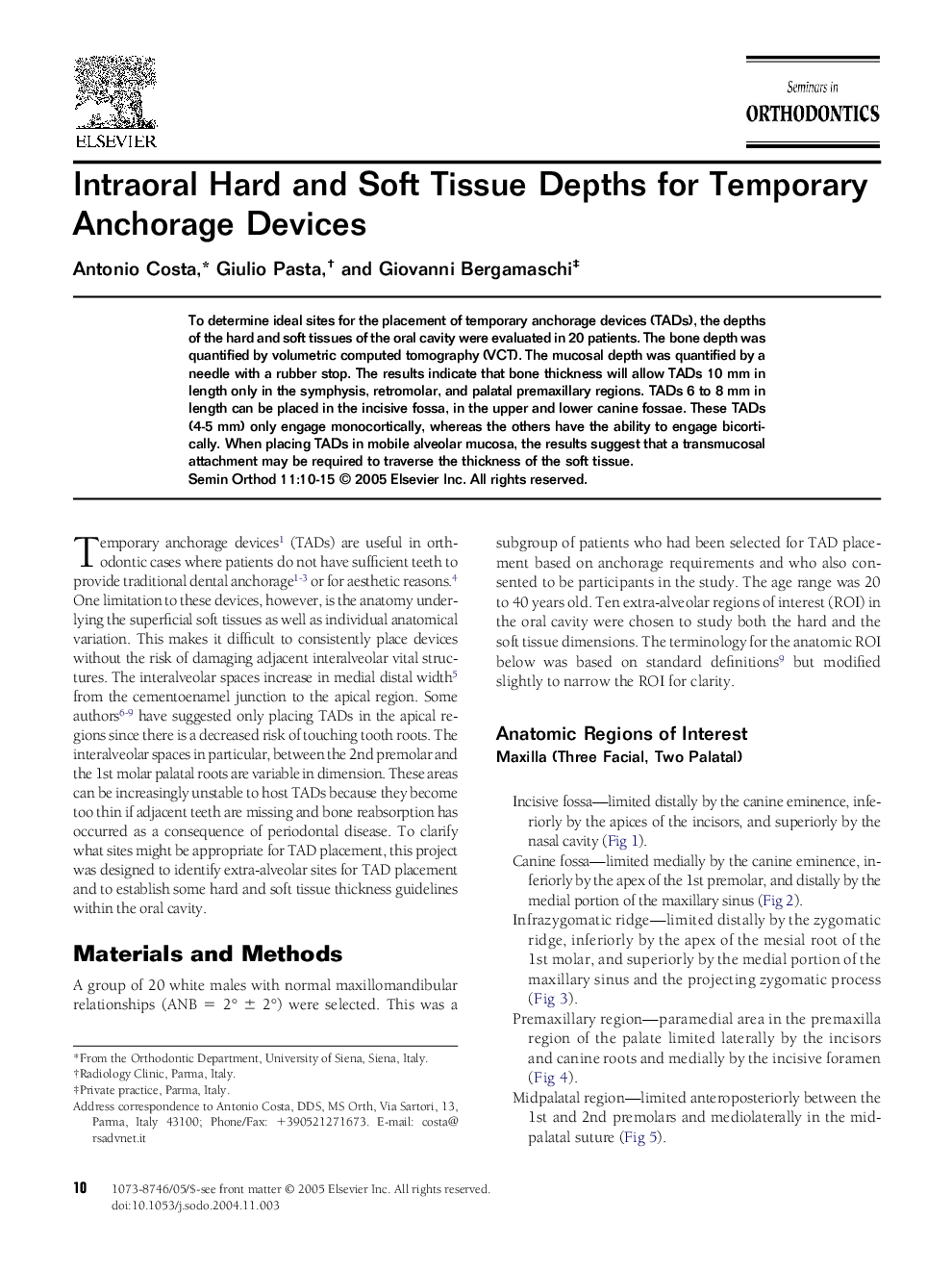| Article ID | Journal | Published Year | Pages | File Type |
|---|---|---|---|---|
| 9220494 | Seminars in Orthodontics | 2005 | 6 Pages |
Abstract
To determine ideal sites for the placement of temporary anchorage devices (TADs), the depths of the hard and soft tissues of the oral cavity were evaluated in 20 patients. The bone depth was quantified by volumetric computed tomography (VCT). The mucosal depth was quantified by a needle with a rubber stop. The results indicate that bone thickness will allow TADs 10 mm in length only in the symphysis, retromolar, and palatal premaxillary regions. TADs 6 to 8 mm in length can be placed in the incisive fossa, in the upper and lower canine fossae. These TADs (4-5 mm) only engage monocortically, whereas the others have the ability to engage bicortically. When placing TADs in mobile alveolar mucosa, the results suggest that a transmucosal attachment may be required to traverse the thickness of the soft tissue.
Related Topics
Health Sciences
Medicine and Dentistry
Dentistry, Oral Surgery and Medicine
Authors
Antonio Costa, Giulio Pasta, Giovanni Bergamaschi,
